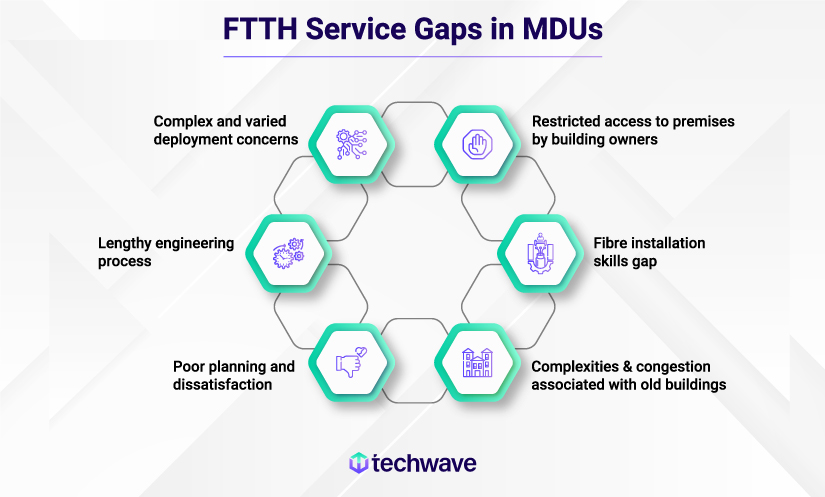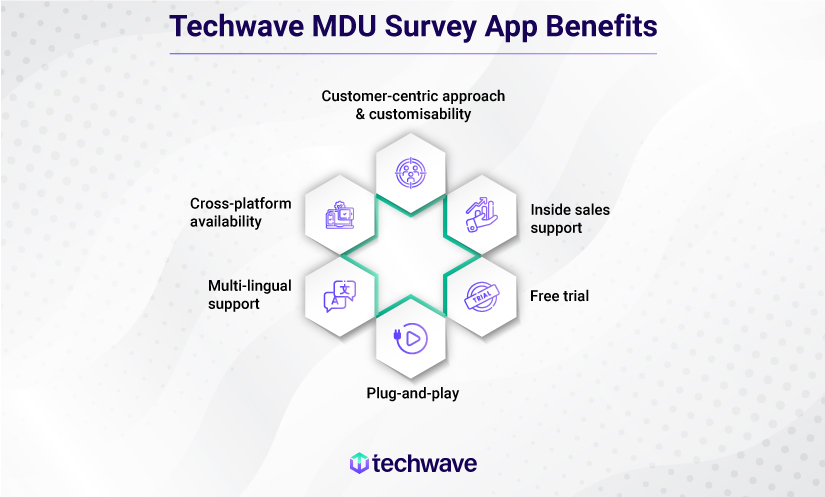
The European landscape is experiencing a surge in demand for high-speed, reliable internet connectivity. As Fibre-to-the-Home (FTTH) networks become the cornerstone of this transformation, wired broadband providers face a crucial challenge: balancing dependable infrastructure with efficient deployment.
While wireless solutions offer a seemingly quicker path, they introduce vulnerabilities at a time when cybersecurity concerns are paramount. Wired broadband stands resolute, offering unparalleled resistance to interference and hacking compared to wireless networks. This is especially crucial for businesses, government agencies, and individuals prioritising data protection. Additionally, wired connections boast unmatched reliability, ensuring a consistent and stable internet experience even during peak usage. Imagine uninterrupted video conferencing, seamless online gaming, and lag-free streaming – wired broadband delivers it all!
A decade into Europe’s fibre rollout, surging bandwidth demand has operators prioritising FTTH/B. This aligns with the EU’s Digital Single Market initiative goals and evolving trends.
- 45% of organizations enable remote work (up to 3 days/week).
- 96% of young people in Europe (vs. 84% overall) use the internet daily.
- Online course participation among young EU citizens doubled from 13% to 28% (between 2019 and 2022).
- Retained the stats here in case you do not wish to use the infographic.
- Let’s go with the text.

However, FTTH’s initial network planning investment can be higher than wireless solutions. This is primarily due to the labour-intensive nature of traditional surveying methods, often involving manual data collection, field visits, and potential rework. These factors translate to increased broadband costs and delays in deployment. This is particularly true for Multi-dwelling Units (MDUs).
Rising Need for High-Speed Fibre in Multi-Dwelling Units
As Europe’s population grows and housing becomes scarce, Multi-Dwelling Units (MDUs) are surging in popularity. Baby boomers downsizing for more manageable homes and rising demand for condos and senior living fuel this trend, with nearly half (47.5%) of European households now residing in MDUs. Notably, the European Commission’s latest Housing in Europe report highlighted that Germany and Italy lead the pack, with around 60% of their populations calling MDUs home, highlighting a significant shift in living preferences.
This presents a golden opportunity for telcos and FTTH internet service providers to expand their fibre optic reach. MDUs offer high population density, making them attractive targets for city fibre infrastructure investments in urban areas. However, challenges remain, particularly for individuals in remote areas and MDU residents (especially in the rural areas) still waiting for the fibre revolution to reach their doorsteps.
What are the FTTH Service Gaps in MDUs?
Imagine navigating a labyrinth of MDUs, each with countless apartments with different architectural layouts and labour needs. Your mission? Meticulously document, survey and plan every detail and strategise MDU fibre installation routes. All this, while adhering to safety regulations. Quite the challenge, isn’t it?
MDUs are diverse, and a one-size-fits-all solution is not applicable. These inherent variations can pose immediate challenges for service providers, both physically and financially. Listed below are some of them.

- Deploying wired fibre to a single-family unit home is distinct from addressing a multi-story building with numerous tenants, necessitating unique FTTH solutions for MDUs architecture and space complexity. The evolving MDU FTTH landscape brings challenges like changing user behaviour, shifting traffic patterns, growing bandwidth demands, new service introductions, high subscriber density, and intricate installation space requirements.
- This lengthy engineering process often causes delays, cost overruns, long installation times and suboptimal network designs. Retrofitting existing structures for fibre introduces engineering challenges that can impede the installation process and increase fibre optic costs.
- Poor planning of fibre network interfaces and service delivery to consumers’ media devices can lead to frustration for everyone involved – from the builder/developer and building owner to the service provider and tenants/subscribers.
- Old buildings are equipped with various cable media, causing congestion in both riser and horizontal applications. The addition of conduits and new fibre cables within walls or ceilings, and the creation of new cable pathways contribute to increased fibre optic costs. In older buildings, provider-designed networks present challenges for installers, including:
⇨ Difficulty accessing building plans or outdated plans
⇨Congested ducts and pathways with undocumented cables pose challenges to safe removal
⇨ Curved pathways and tight spaces require cable to be pulled through complex routes
- Telco and fibre internet operators grapple with significant skills gaps in the industry for fibre installation, particularly affecting the swift deployment of FTTx. For example, a shortage of specialised splicing technicians and the high costs of fibre splicing technology increase operators’ expenses.
- Property owners often hesitate to permit new fibre installations due to potential disruptions and the fear of cosmetic damage from extensive MDU cabling. Complicating matters is that most buildings lack efficient designs and surveys for standard fibre network connections. Consequently, building owners may restrict engineers’ repeated access to apartments and relevant spaces for fibre cable installations.
For example:
- MDU site survey: Assessing potential MDU business needs demands that operators conduct a thorough physical survey, entailing a significant investment of time and resources. Minimising truck rolls for site surveys is crucial for saving time and costs. Additionally, obtaining permission from building owners/associations necessitates a detailed survey to determine installation techniques.
- Engineering and designing: Each MDU is unique in terms of engineering and design, emphasising that “one design doesn’t fit all.” Generating engineering drawings for MDU fibre cables is time-consuming and labour-intensive because MDU structures vary and are complex.
These challenges prompt TSPs and ISPs to reconsider their design and surveying mapping process, necessitating agile and efficient solutions to deliver high-quality internet connectivity to MDUs.This is where Techwave’s revolutionary MDU survey app enters the scene, transforming the game for wired broadband providers.
Effortless Planning, Accurate Results, Low Costs: Techwave’s MDU App Simplifies Survey & Design
Techwave , a telecom industry leader in digital solutions, unveils a game-changer: its transformative MDU survey app . This app empowers users with powerful tools for precise MDU surveys, identifying infrastructure needs and user demands to pinpoint FTTH service gaps with laser accuracy.
Effortless data capture, intuitive mapping, and seamless cloud-based collaboration fuel a streamlined process, paving the way for efficient FTTH planning and deployment in MDUs. The app-
- Empowers surveyors with intuitive tablets to capture high-resolution MDU images effortlessly
- Automatically geolocates and overlays images on interactive maps, facilitating real-time annotations for optimal fibre pathways, transcending mere data collection
- Boasts robust cloud-based features, fostering real-time collaboration between field surveyors and back-office teams
- Facilitates instant sharing of crucial information, including cable routes and potential challenges, and enhances planning and risk assessment
- Ensures seamless compliance by adhering to safety regulations and project guidelines
In short, the MDU survey app lets you plan your fibre network in real-time, identifying potential issues like congestion or building damage before they happen. This proactive approach minimises disruptions, slashes costs, and ensures accurate fibre placement.
Benefits of Techwave MDU Survey App (In Addition to the Above)
Our cutting-edge MDU app is a collaborative platform that empowers you with:

● Understanding customer needs in telecom and customisability: The survey app helps telecom providers establish a direct line of communication with MDU residents, fostering a customer-centric approach.
⇨ The MDU survey tools enable a telecom provider to collect resident feedback on fibre internet speed and reliability, aiding the identification and improvement of service areas.
⇨The tool can assist providers in understanding resident preferences. For example, if residents express interest in a new streaming service, the provider can collaborate with a streaming service provider, gaining a competitive edge. Or, if they discover resident interest in 5G, the provider can develop plans to provide 5G services to its customers.
● Cross-platform availability: Techwave’s MDU app is accessible on various devices, such as smartphones, tablets, and laptops.
● Facilitates exploration of new markets: Techwave enhances the app’s accessibility with multilingual support, enabling MDU telecom providers to explore new markets.
● Plug-and-play: The app integrates effortlessly with your existing CRM and billing platforms, streamlining adoption and user experience. Plus, FTTH internet service providers can enjoy seamless integration with Anchor, Techwave’s cloud-based project management tool. Anchor offers a unified platform for task management, query resolution, job tracking, and comprehensive reporting.
● Free trial: Experience the app’s power firsthand with a 10-day complimentary trial.
● Inside sales support: Get expert guidance and personalised demos to ensure success.
If these benefits are any indication, wired broadband providers – you know what to do! Do not let MDU complexities stall your FTTH rollout. Techwave’s MDU app is your GPS to a faster, smoother, and more cost-effective FTTH deployment. Experience the power of effortless planning and unlock the full potential of wired broadband in MDUs.
Contact us today for your free trial!
